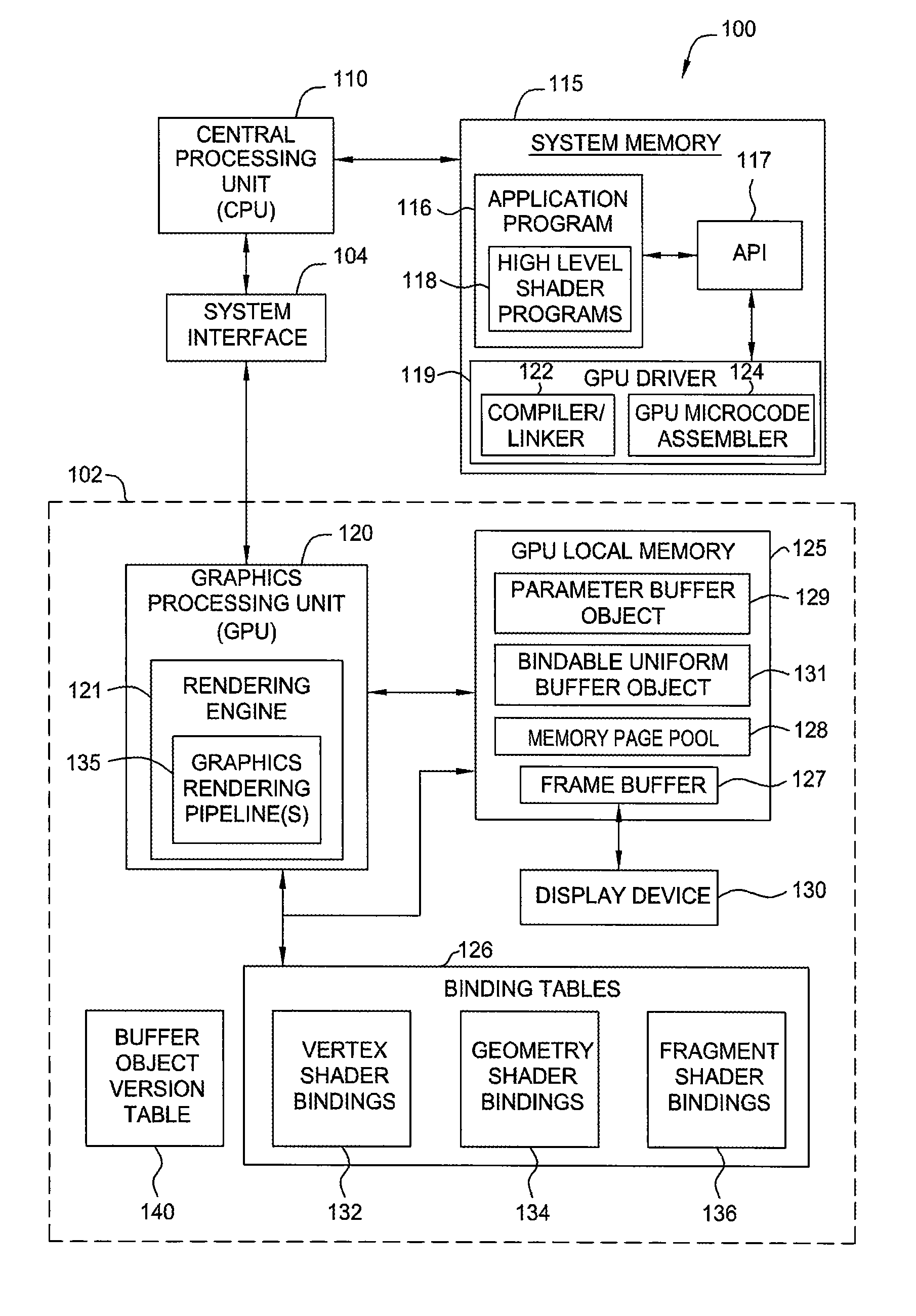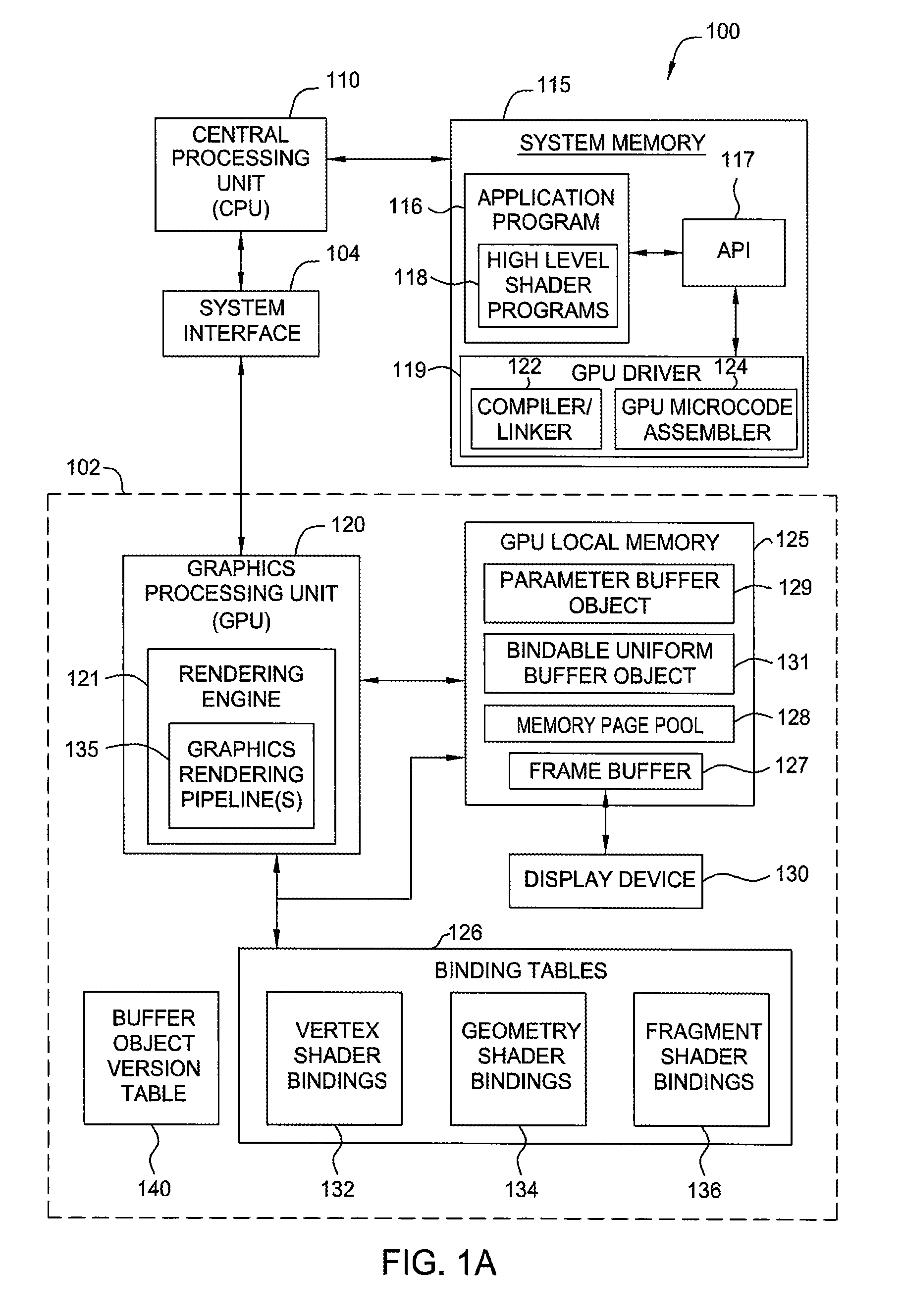Parameter buffer objects for shader parameters in a graphics library
a buffer object and shader technology, applied in the field of parameter buffer objects, can solve the problems of implementation-dependent limits on the amount of uniform storage, the inability to share uniforms among multiple shader programs, and the inability to add on-chip logic to processors, so as to increase the performance of graphics rendering hardware and increase gpu performan
- Summary
- Abstract
- Description
- Claims
- Application Information
AI Technical Summary
Benefits of technology
Problems solved by technology
Method used
Image
Examples
Embodiment Construction
[0022]Embodiments of the invention allow developers of graphics applications to efficiently and effectively use buffer objects in the local memory of a GPU as the storage space for a bindable uniform variable declared in a shader program or as a parameter buffer object storing one or more parameters used by a shader program. Buffer objects provide a region of memory (i.e., buffers) accessible through an identifier. Buffer objects allow a GPU driver to optimize an internal memory management scheme and choose the best type of memory—such as cached / uncached system memory or graphics memory—in which to store a buffer object.
[0023]Generally, parameter buffer objects may be used by an assembly level shader program, and bindable uniforms may be used by shader programs developed in high-level shader languages, such as the OpenGL Shading Language (GLSL) or the Cg shading language. In either case, the use of buffer objects as parameter buffer objects or as the storage space for a bindable uni...
PUM
 Login to View More
Login to View More Abstract
Description
Claims
Application Information
 Login to View More
Login to View More - R&D
- Intellectual Property
- Life Sciences
- Materials
- Tech Scout
- Unparalleled Data Quality
- Higher Quality Content
- 60% Fewer Hallucinations
Browse by: Latest US Patents, China's latest patents, Technical Efficacy Thesaurus, Application Domain, Technology Topic, Popular Technical Reports.
© 2025 PatSnap. All rights reserved.Legal|Privacy policy|Modern Slavery Act Transparency Statement|Sitemap|About US| Contact US: help@patsnap.com



